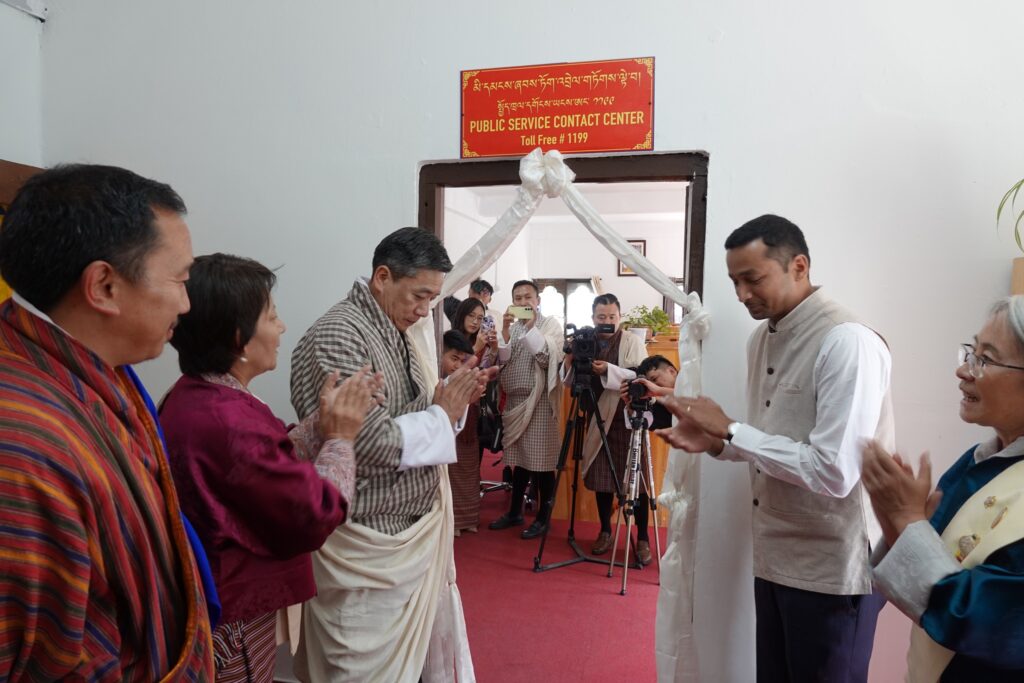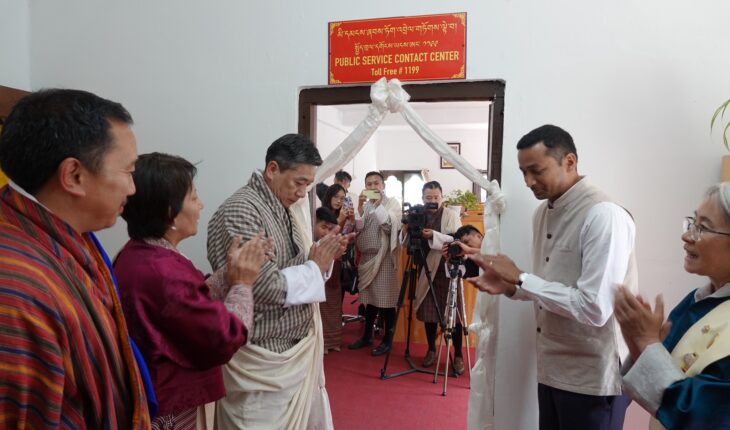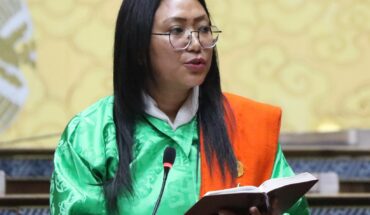
DAWA ZANGMO
Thimphu
In a bid to enhance citizen access to government services and improve overall public service delivery, the government officially launched the Integrated Service Centre (ISC) and an upgraded Public Service Contact Centre (PSCC) on June 10.
Both platforms will be overseen by the Prime Minister’s Office (PMO), marking a significant step in the government’s broader strategy to build a responsive and citizen-centric governance system.
These new platforms are part of a comprehensive reform under the ‘Whole of Government’ approach. The objective is to dismantle bureaucratic barriers, bridge institutional silos, and bring services closer to the public.
The initiatives seek to create a seamless experience for citizens by integrating a variety of government services under a unified system that is both accessible and efficient.
The Integrated Service Centre, though formally inaugurated this week, has been operational on a trial basis since its soft launch in December 2024.
During the past six months, the Public Service Centre contact collaborated with 49 different government agencies to on board 56 commonly availed public services.
These services span a wide spectrum, including civil registration, trade and transport permits, business licensing, and forestry-related documentation.
The Integrated Service Centre was conceived as a “one stop” facility, designed to consolidate numerous government services into a single point of access.
According to the Director of the PMO, Sonam Tobgye, this integration aims to simplify processes for citizens who otherwise have to navigate various departments and digital systems.
“With the Integrated Service Centre, citizens need not visit different offices or navigate through various systems,” the Director stated. “From application to final delivery, every stage of the service is supported and assisted with clarity and care.”
Central to the design of the Integrated Service Centre is the principle of ‘No Wrong Door’. This approach ensures that all citizens seeking government services are assisted, regardless of whether their specific need is officially listed within the available offerings.
In cases where specialized knowledge or authorizations are required, referrals are made to the appropriate agencies. The Integrated Services Centre offers both online and in person support regardless of their location or digital literacy.
All core services provided at the Integrated Services Centre are free of charge. However, nominal fees are levied for ancillary tasks such as printing and photocopying.
Parallel to the launch of the ISC, the government also introduced an enhanced version of the Public Service Contact Centre. Accessible via the 1199 helpline, the Public Services Contract Centre is designed as a centralized information point where citizens can obtain accurate, real time data regarding government services.
The 1199 platform is particularly significant in reducing the dependency on informal or personal contacts within government institutions for information.
The Public Services Contact Centre is operated by a team of five experienced Service Executives and eight well-trained Call Executives. This team offers multi-channel communication services, including voice calls, email responses and interactions via official government social media platforms.
The centre provides assistance with service inquiries, application tracking, form-filling support, and issue resolution. Oversight and management of the PSCC are carried out by the Public Service Delivery Division under the PMO, which is also responsible for service onboarding and performance monitoring.
Over the past 14 years, the government to citizen (G2C) service model has undergone considerable development. However, challenges such as limited infrastructure, bureaucratic inefficiencies, and a lack of coordinated digital frameworks have been persistent.
The launch of the ISC and PSCC seeks to address these issues directly by creating a more integrated and transparent service delivery ecosystem.
According to Director Sonam Tobgye, improving public service delivery is among the government’s top priorities under the 13th Five-Year Plan. He emphasized that public service delivery plays a pivotal role in national development.
“Public service delivery is the backbone of our nation’s progress. It shapes economies, transforms lives, and fuels aspirations for our people,” he stated. “These two initiatives will address the challenges faced by citizens and unlock new opportunities.”
Echoing this sentiment, Ugyen Rinzin, the Deputy Chief Program Officer of the Public Service Delivery Division at the PMO, clarified that the primary ownership of individual services would continue to lie with the respective agencies.
“Citizens will now have the flexibility of convening services either through the Integrated Service Centres or directly from the respective agencies,” he explained. This dual access model is designed to give the public more choice while ensuring consistency in service quality.
Even prior to the official launch, the Integrated Service Centre demonstrated strong potential for public utility. Without any formal public announcement, the centre successfully served 538 walk in clients.
Similarly, the 1199 Contact Centre fielded 110 calls during the same period. This early engagement signals strong public interest and validates the need for centralized, user-friendly platforms.
An official from the PMO highlighted the importance of the 1199 helpline in connecting citizens directly with government services.
“Whether it is for economic information, tracking applications, or resolving grievances, 1199 is henceforth going to be your direct link to government services,” the official stated.
Both the ISC and the PSCC are expected to play pivotal roles in the government’s long-term vision for public service delivery.
Plans are already underway to extend the ISC model to the gewog level by upgrading existing Community Centres.
The Director of the PMO noted that these platforms are not static projects but evolving systems that will continue to expand as more services are integrated.
“These two platforms will continue to evolve as more public services are on boarded,” he said. “It is our collective journey to make any services a more efficient, accessible, and citizen-centric public service delivery.”





